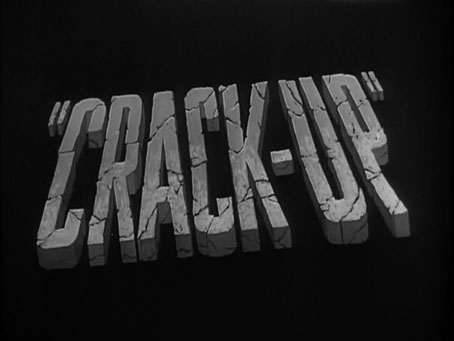
Continuing an occasional series about artworks in feature films. The Dark Corner (1946) was the subject of the last entry which ended with the words “I’ve been wondering what other Dalínean references might be hiding in American feature films from this time”. This post is one answer, being a further example of a reference to Salvador Dalí’s painting in a film from the 1940s. Crack-Up was written by John Paxton, Ben Bengal and Ray Spencer, and directed by Irving Reis. Like The Dark Corner this is another film noir from the noir-heavy year of 1946, with both films concerning mysteries set in the New York art world.
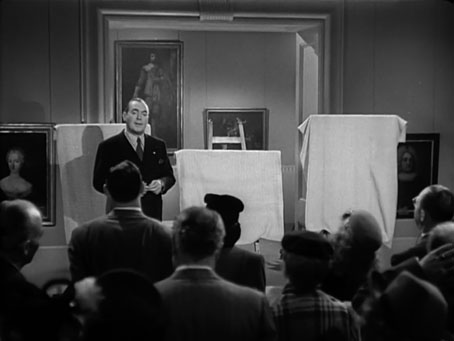
The crack-up in question is a mental collapse sustained by art curator George Steele (Pat O’Brien) who believes he’s been involved in a rail crash even though there’s no physical evidence of the disaster. The film has an intriguing Twilight Zone quality for a while although this evaporates once the machinations of the plot show themselves. The Dalí reference occurs in a flashback to the events that lead to the psychotic episode when we see Steele giving a lecture to members of the public at the museum where he works. His talk demonstrates his authority on artistic matters while also reassuring the film-going audience that he isn’t one of those egghead types with a taste for “incomprehensible” modern paintings.
Steele’s aesthetic conservatism is confirmed when he reveals this Dalínean item which summons derisive laughter from the assembly, and which he admits he doesn’t like. As with The Dark Corner, the critical dice are loaded against Dalí (and against modern art in general) by showing a deliberately poor pastiche. Crack-Up goes further by setting the faux Dalí next to The Angelus by Jean-François Millet, a painting which Steele has shown the audience a few moments before, and which prompts sighs of appreciation.
This comparison between Millet and Dalí threw me out of the story for a few seconds while I wondered whether the choice of The Angelus was a deliberate one by the writers and director, or merely coincidental. Anyone with a more than cursory knowledge of Salvador Dalí’s work will know that Dalí was obsessed with The Angelus for most of his life, frequently borrowing the figures for his own paintings and even creating new variations on the original. In 1938 he wrote a book-length analysis of the picture, The Tragic Myth of The Angelus of Millet, although the text was lost for many years and wasn’t published until the 1960s. There’s a further curious detail here, in that Dalí believed that Millet had originally shown the couple mourning the death of a child, and that a child-sized coffin had been painted over to make a more generally religious scene. Dalí’s insistent claims about the absent coffin eventually prompted an X-ray examination of the painting. The results were inconclusive but the investigation adds a further layer of coincidence to the Crack-Up lecture when Steele moves his discussion to the technique of X-ray analysis which he says can reveal the earlier stages of a painting or even expose forgeries. This turns out to be a crucial plot element later in the film.
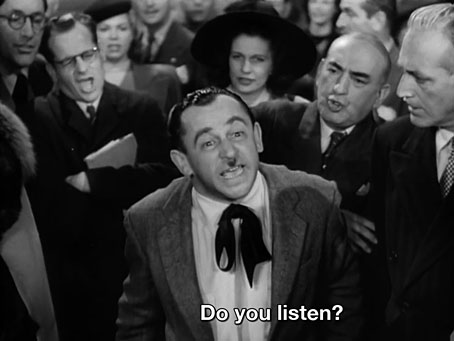
Before the lecture ends there’s a further dig at modern art when a small man with a Hitler moustache and a foreign (Germanic?) accent loudly complains about the dismissive tone of the discussion before being forcibly removed from the hall. If the heckler’s moustache is supposed to connect Modernism with the recently-deceased Führer then this is another calumny on the part of the film-makers, the Nazis having been forthright in their loathing of what they called “entartete kunst“, or “degenerate art”. New York in the 1940s was filled with exiled European artists, Dalí among them.
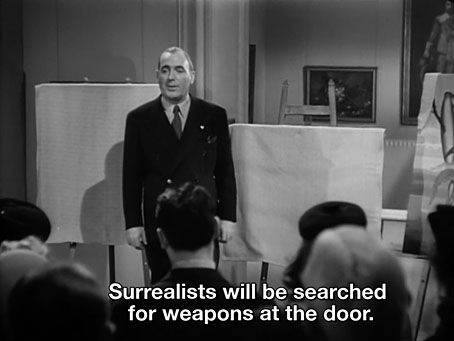
The heckler’s outburst leads Steele to end his lecture with a joke at the expense of the art movement which had until this moment gone unnamed. One of the ironies of the film’s dismissal of the Dalí-like painting and the consequent dig at the Surrealists is that André Breton and his American acolytes were equally dismissive of Salvador Dalí. The Crack-Up audience could at least laugh then turn their attention to other things, but the Bretonites had to watch Dalí promote his own brand of Surrealism, unable (or unwilling) to admit that it was his abilities and attention-seeking antics that gave the word “Surrealist” its popular currency outside the galleries and art magazines. Without that provocative persona Surrealism in America would never have been newsworthy enough to be mentioned in a film such as this.
Elsewhere on { feuilleton }
• The Surrealism archive
Previously on { feuilleton }
• Art on film: The Dark Corner
• Art on film: Je t’aime, Je t’aime
• Art on film: Space is the Place
• Art on film: Providence
• Art on film: The Beast

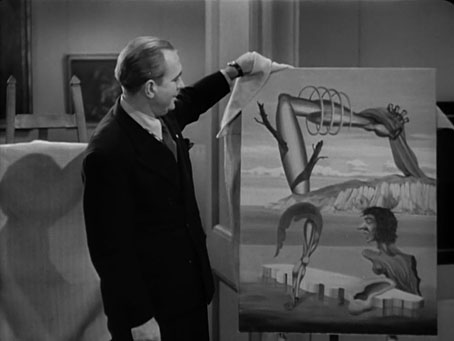
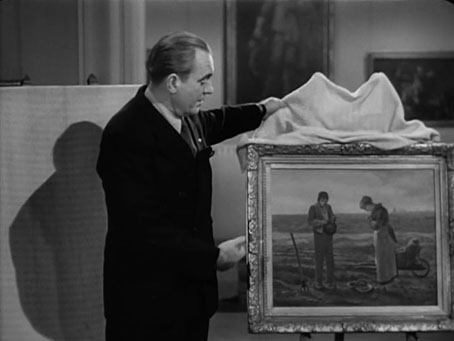
Great write-up. It got me curious as to whether anyone had written a book on Surrealism in Films Noir. There have been many books published on Noir, as I’m sure you are aware. I’ve had a few of them myself. I’ve seen some pretty niche entries on various aspects of the subject, too.
But plugging “surrealism” and “film noir” into my favorite book search site yielded nothing. I know movies that feature an actual art gallery and a lecture on modern art are bound to be few, indeed; but a wider scope of surrealist influence on the genre might just be a decent project. Maybe you have some spare time, ha ha. I would definitely buy your book on art influences on Films Noir. I think you have two chapters, at least, ready to go.
I think it would be a stretch to try and find connections with Surrealism and film noir beyond these isolated examples, German Expressionist cinema is really the big influence where the visuals are concerned. Some of the dream/nightmare sequences are fairly wild, like Marlowe’s drug episode in Murder, My Sweet. I have a post planned on the subject eventually.
Nice post, thanks :)
I note that Tristan Tzara tended to use less compliemtary terms than ‘exiled’ about Surrealists in America at that time!